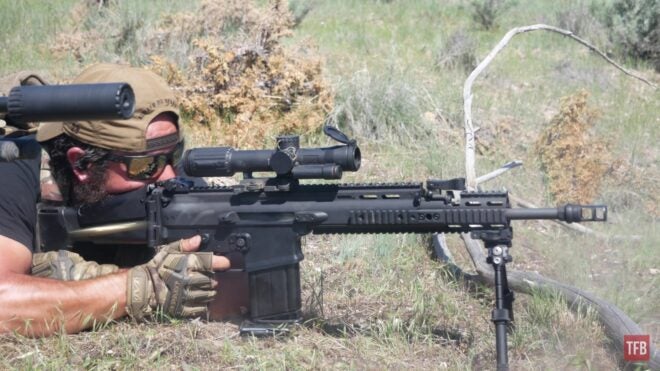The United States Marine Corps made the decision back in early 2020 to equip its infantrymen with a universal weapon optic by adopting the Trijicon VCOG (Variable Combat Optical Gunsight) 1-8×28 riflescope as the Squad Common Optic (SCO). After an extensive evaluation process, Trijicon emerged as the chosen manufacturer for the SCO along with their 1-8x28mm VCOG optic. The contract would secure about $64,000,000 for the 19,000 units the USMC ended up ordering and delivery began in February of 2021 with the final units being delivered sometime this year (2023). The optic was meant to be primarily fielded on the M4 carbine and the M27 IAR (Infantry Automatic Rifle). However, as stated by the Marine Corps themselves, the optic is intended to be as ammunition and weapon system agnostic as possible which should mean it can easily be adapted to be effectively used on virtually any platform. Today we’re going to put that theory to the test by putting the legendary durability of the Trijicon VCOG up against the unstoppable force that is the FN SACR 17 – a rifle that is infamous for destroying nearly every optic put on it.
More About the VCOG @ TFB:
- POTD: M27 Infantry Automatic Rifle with Trijicon VCOG 1-8×28
- POTD: Alpha Company – Battalion Landing Team on USS Portland
- POTD: U.S. Marines in Infantry Marine Course
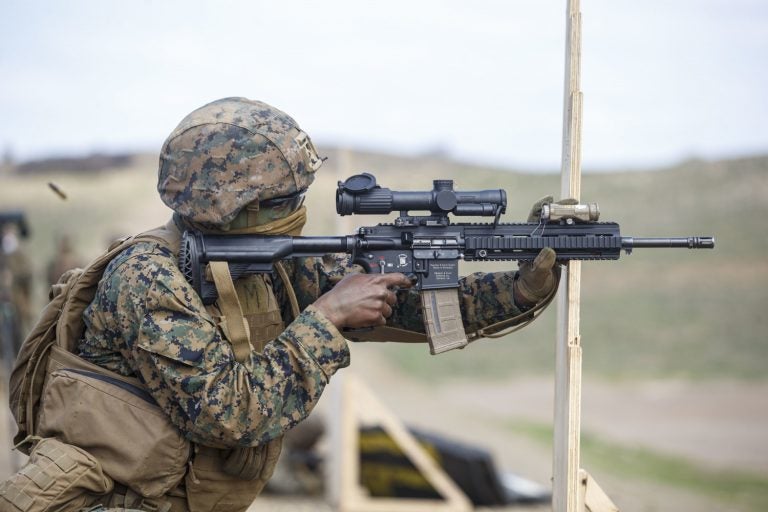
U.S. Marine Corps, taken by Lance Cpl. Andrew Cortez.
The Unstoppable SCAR 17 Meets Immoveable VCOG
The FN SCAR 17
The FN SCAR 17, also known as the FN SCAR-H, is a battle rifle designed and manufactured by FN Herstal. It is a variant of the Special Operations Forces Combat Assault Rifle (SCAR) family, which was developed to meet the requirements of the United States Special Operations Command (USSOCOM). The SCAR 17 is chambered in 7.62x51mm NATO (.308 Winchester), which firmly puts it into the role of what we’d typically call a “battle rifle.”
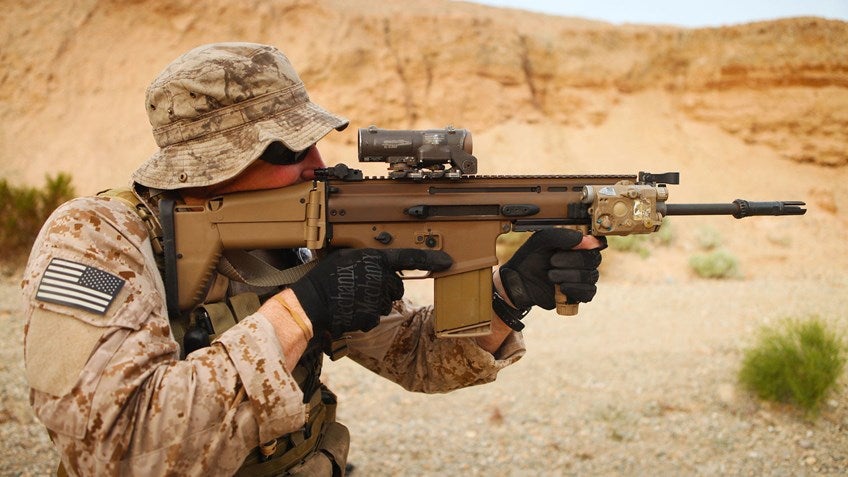
The SCAR was never officially adopted as a standard service rifle by any branch of the military but as stated before, was primarily adopted by various special operations units like the Army Rangers, as well as some Special Air Force Units and even some MARSOC units. After the SCAR’s initial introduction on the civilian market, reports started coming in that the rifle was breaking optics left and right. Not just cheap optics as one would expect, but higher-end optics like EOTechs, Aimpoints, ELCANs, and even ACOGs which are well known for being virtually bombproof.
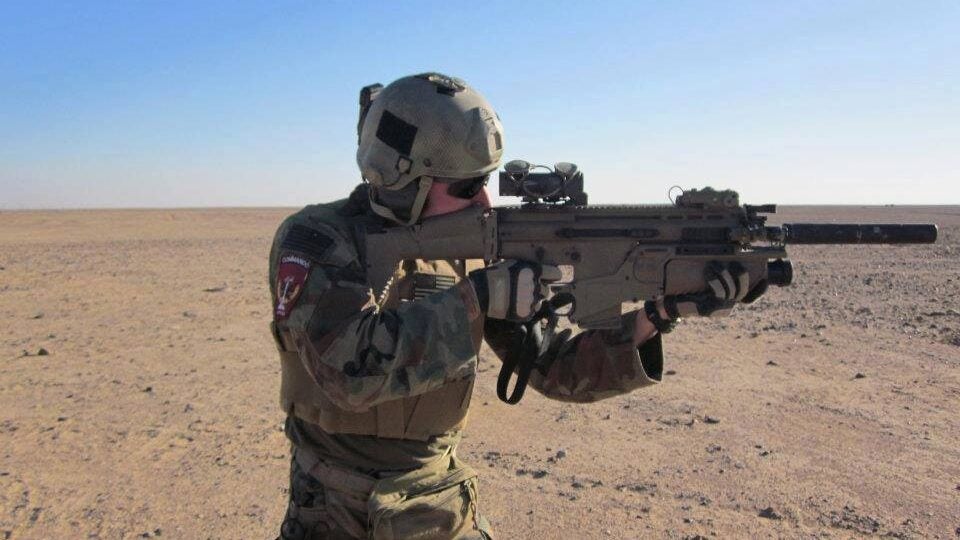
While it’s easy to just dismiss this claim as internet lore, the SCAR does have something quite interesting going on as it’s a piston-driven gun with an incredibly large mass that reciprocates in both directions very violently and quickly. In general, most rifle scopes are built to handle the rearward recoil impulse, but not the forward impulse – at least not at that level of force. You can think of it as the same reason why piston air rifles destroy standard rifle scopes – a lot of optics just weren’t designed for something like the FN SCAR. While this rifle was never specifically intended for this optic or vice versa, I was morbidly curious to see how the pair would work out since the Marine Corps specifically selected this optic to be a versatile option. To do that, I had to get my hands on as close to the real deal as possible, the Trijicon 1-8×28 VCOG (SKU: VC18-C-2400012).
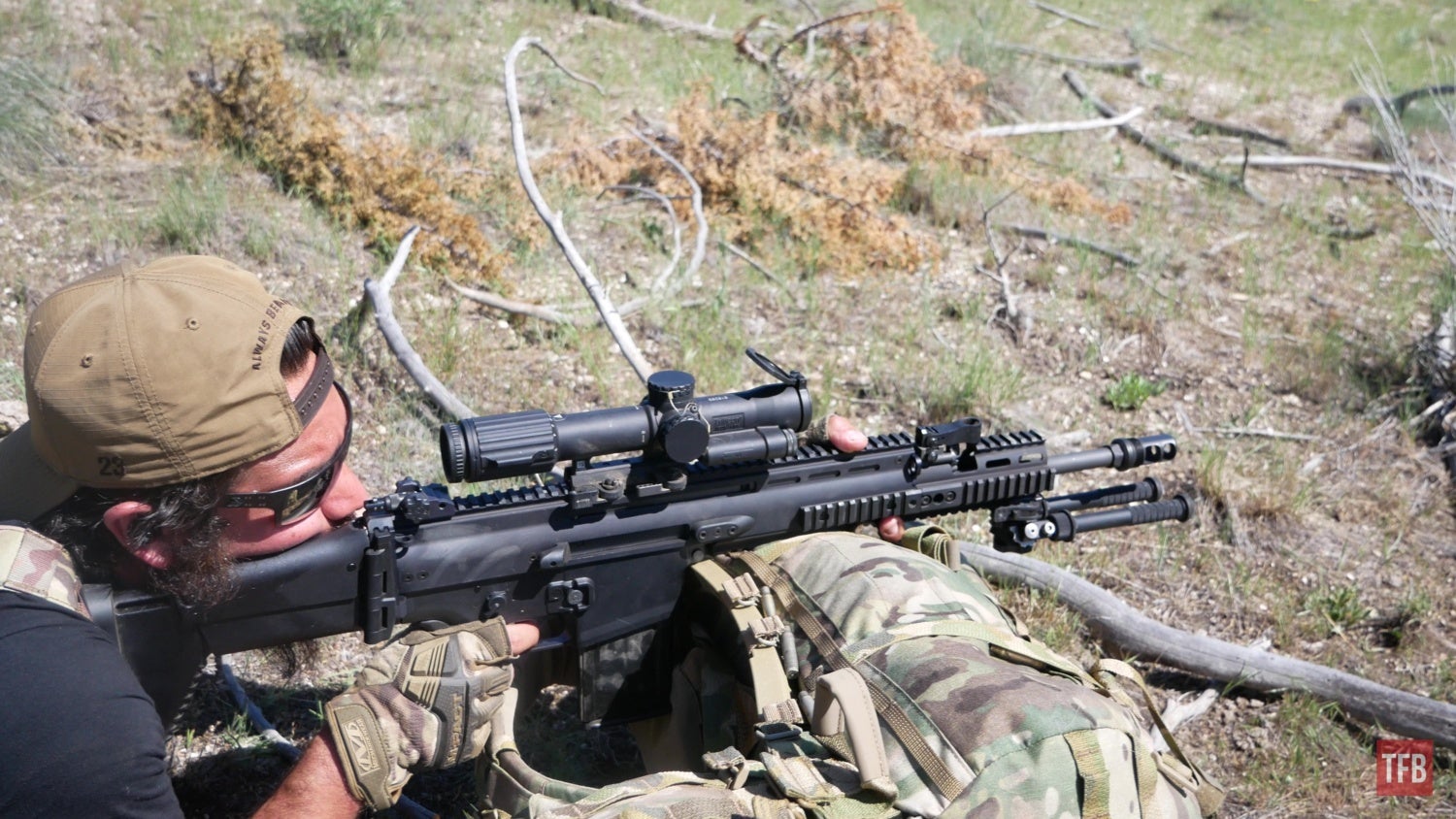
The Trijicon VCOG
Designed for both Close Quarter Battle and long-distance marksmanship, the VCOG boasts an incredibly robust construction, forged from 7075-T6 aluminum, and waterproof up to 66 feet. Its first focal plane reticle is intended to provide accuracy across various magnifications and cartridge types, and the scope offers eleven brightness settings, including two for night vision compatibility and for better target/reticle contrast. The VCOG is intended to provide seamless operation and easy attachment to any rail system and comes standard with a Larue Tactical LT799 QD mount.
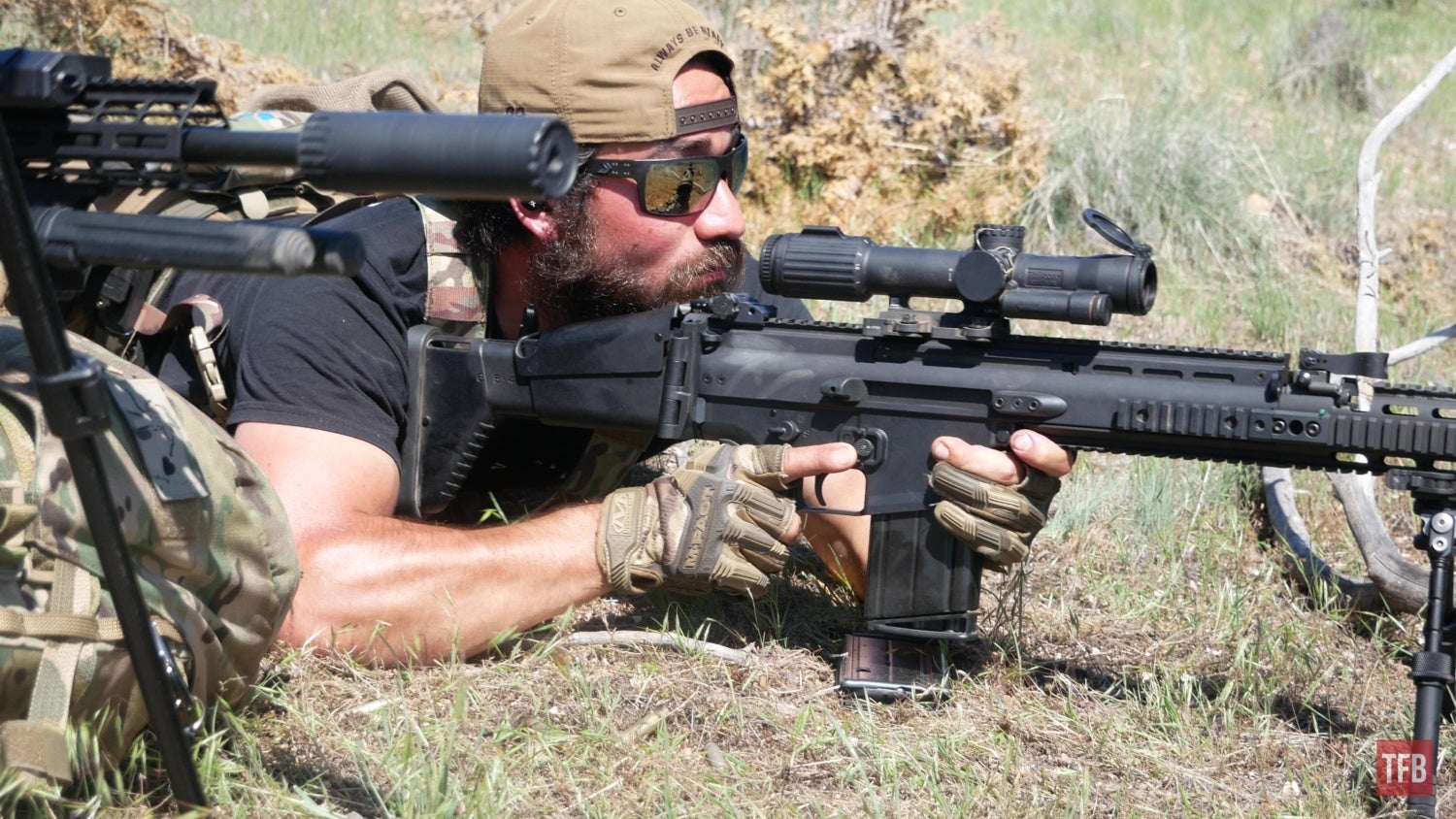
This offering is functionally identical to the USMC Squad Common Optic (SCO) VCOG. With a forged aircraft-grade 7075-T6 aluminum housing, the VCOG® is nearly indestructible. Superior glass provides exceptional clarity and color with zero distortion. The universal segmented circle / MRAD crosshair dot with wind holds reticle is designed for multi-platform use, accommodating multiple calibers
VCOG Overview – Trijicon.com
My experiences out in the field with the VCOG were rocky to start, mostly because I had to get used to using it on the SCAR which I have had very little experience with at long distances. However, I quickly came to like the optics reticle on 1x because even without illumination, it provided me with a very clear and easy-to-acquire sight picture. The adjustable illumination was also pretty useful on lower magnification levels, the battery life is horrendous but with 11 brightness settings, you have enough to make the reticle daylight bright – but not red dot bright. It’s really easy to forget to turn off the illumination, but there are “off” settings in between each brightness setting so you don’t have to put in much effort to help conserve your battery life.
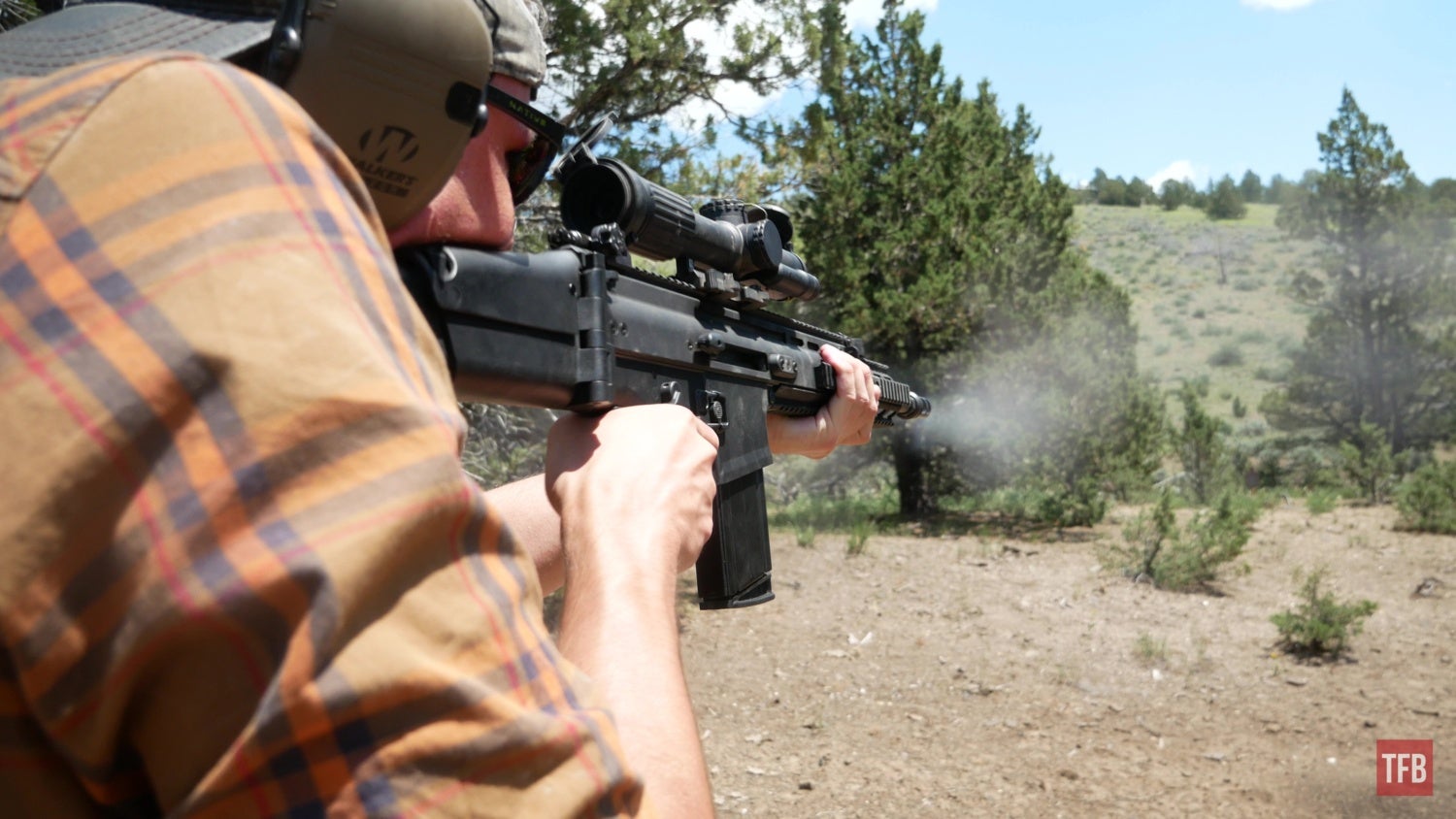
Overall the optic provides a good balance of glass clarity, clearly marked reticle that’s useable at any magnification range, as well as an additional 2X of magnification over another recently adopted combat optic the TANGO6T 1-6x24mm (by the US Army for use with the M5). The TANGO6T (~27 oz) is 4 ounces lighter and slightly more compact than the VCOG but lacks additional magnification and QD capability and simply doesn’t look like its as durable as the VCOG. The toughest pill to swallow with this optic, however, is the price. The Trijicon VCOG specifically in this article will set you back a full retail price of $3,310.00. That’s well into the range of some more premium higher magnification optics.
Unstoppable Force Meets Immoveable Object
I had ample opportunity to shoot the VCOG/SCAR 17 combination on a recent trip out to the Oregon Badlands where a couple of friends and I were able to not only shoot the rifle/optic combo under low light conditions but also out to distance to test how useful the “universal” MRAD reticle was. The zeroing process is handled like just about every other rifle and after a quick 100-yard zero on steel, we walked in the zero on some much further away targets with the furthest being about 500-yards away at the most – not an incredibly long stretch for 7.62×51/.308, but certainly far enough away to where our 3/4 sized steel silhouette targets were becoming hard to find even with 8X magnification.
While I don’t have any way to quantify why the results came out the way they did, I can report that the reticle actually does kind of work – even with factory .308 ammunition out of a rifle it was never specifically designed around. We ranged two separate steel targets that were sitting at around 250 and 500 yards and while the numbered holdovers didn’t correspond to their matching numerical distance, they at least gave me numbers to associate with distances (for example, impacts on the 500-yard target had me using the 8 MIL holdover).
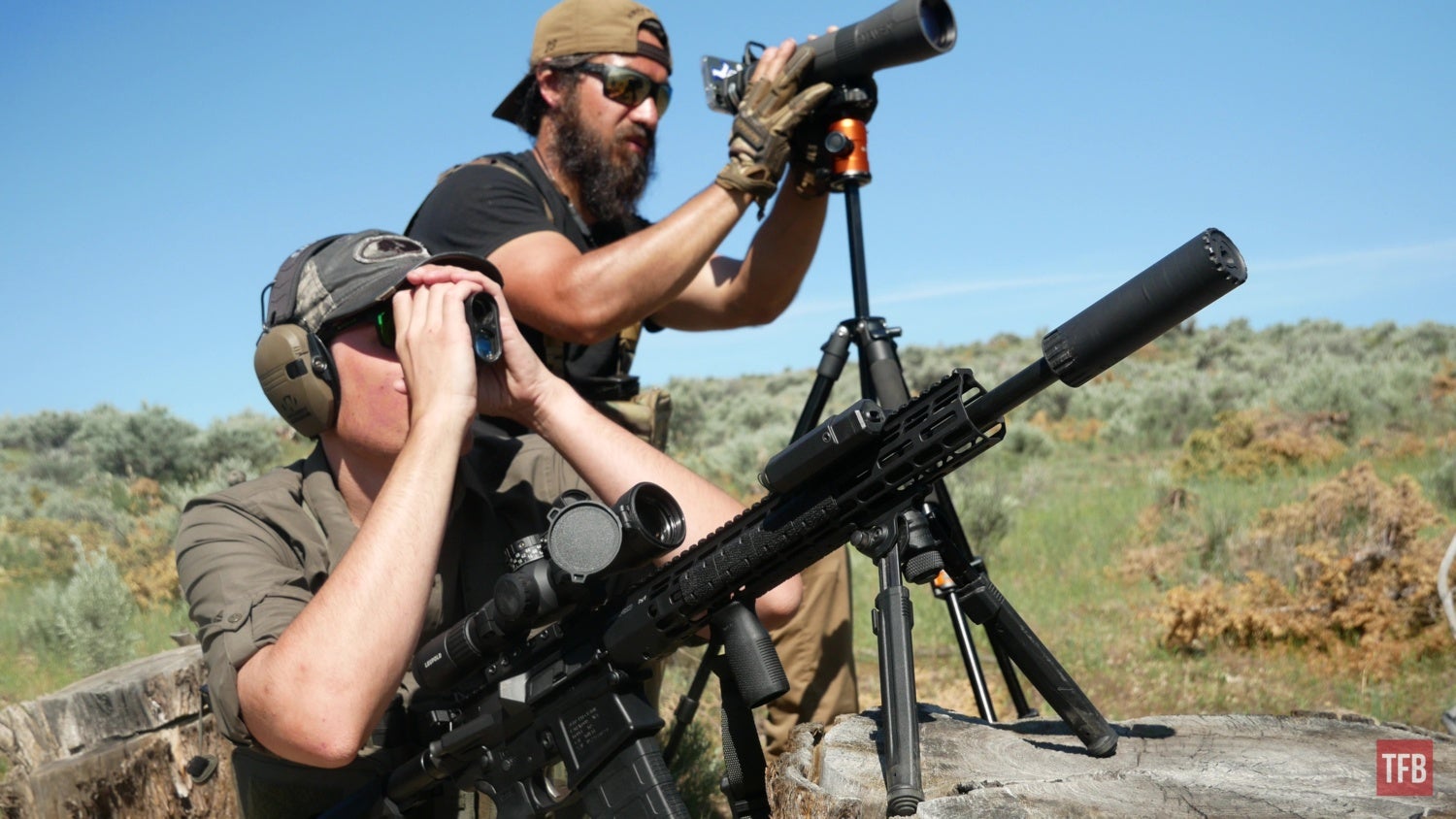
While this might seem like a problem, any competent marksman could easily make themselves a DOPE card to work with this specific kind of setup. Long-range performance is definitely there with the VCOG with perhaps the most frustrating issue being the tiny eye box that the optic has on full magnification. On top of that, the normally useful outer segmented ring also happens to scale with the rest of the reticle and winds up taking a lot of viewing space at full magnification which is kind of frustrating.
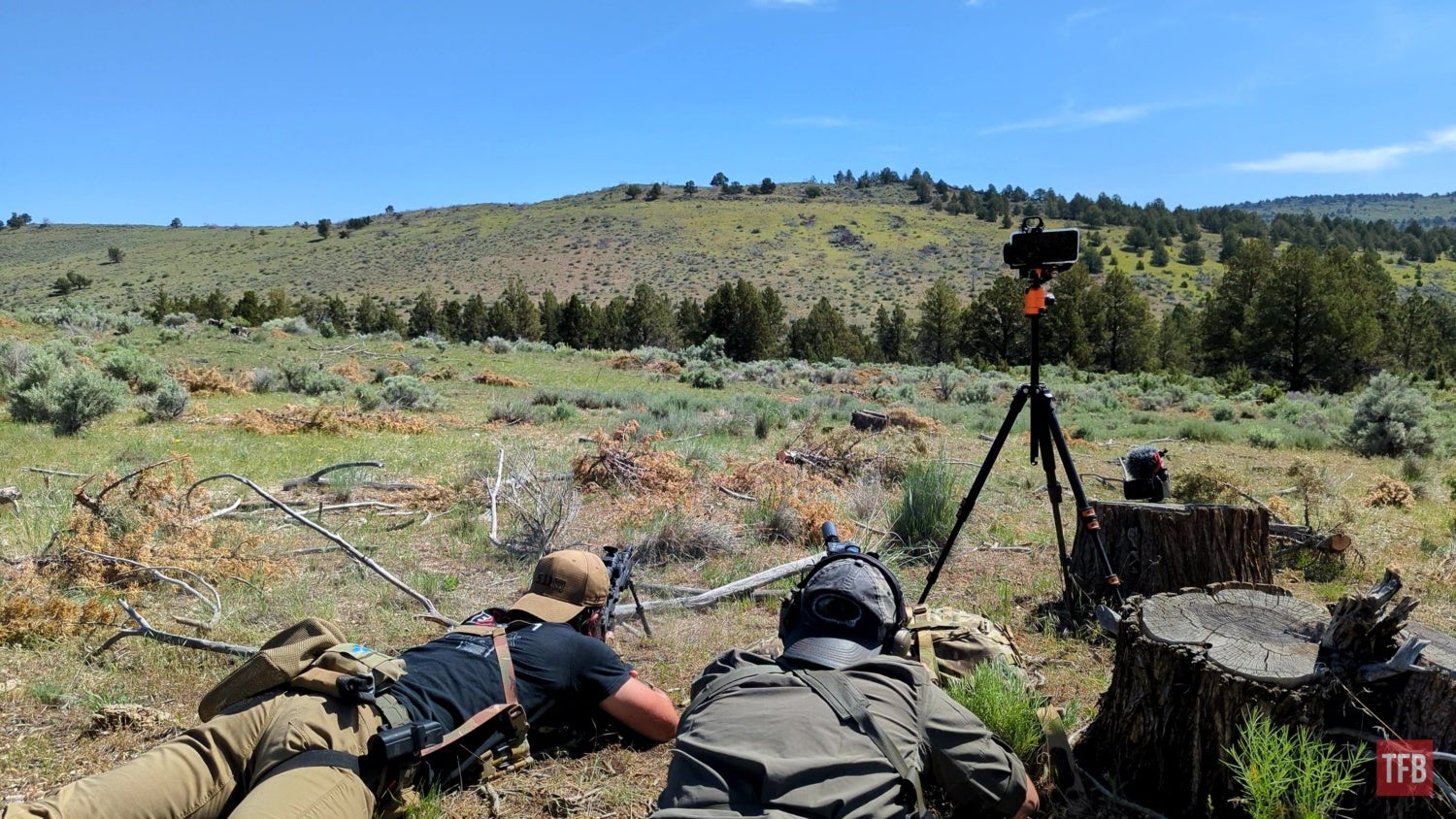
For most of the multi-day shooting trip, the VCOG held up beautifully, however, at the very end of our shooting session, we noticed something alarming – the reticle appeared to be canted about 5-10 degrees clockwise within the optic’s body. While the VCOG was subjected to fairly standard range abuse, we also hiked around with the rifle/optic combination a lot and were actually more concerned with preserving the finish of the SCAR 17 since it was borrowed from a friend. However, it seems that the legend of the optic-killing SCAR turned out to be true in our case, or at least we think that’s what happened – there really isn’t any other explanation for why the reticle was suddenly canted several degrees. The SCAR claims the life of yet another innocent optic.
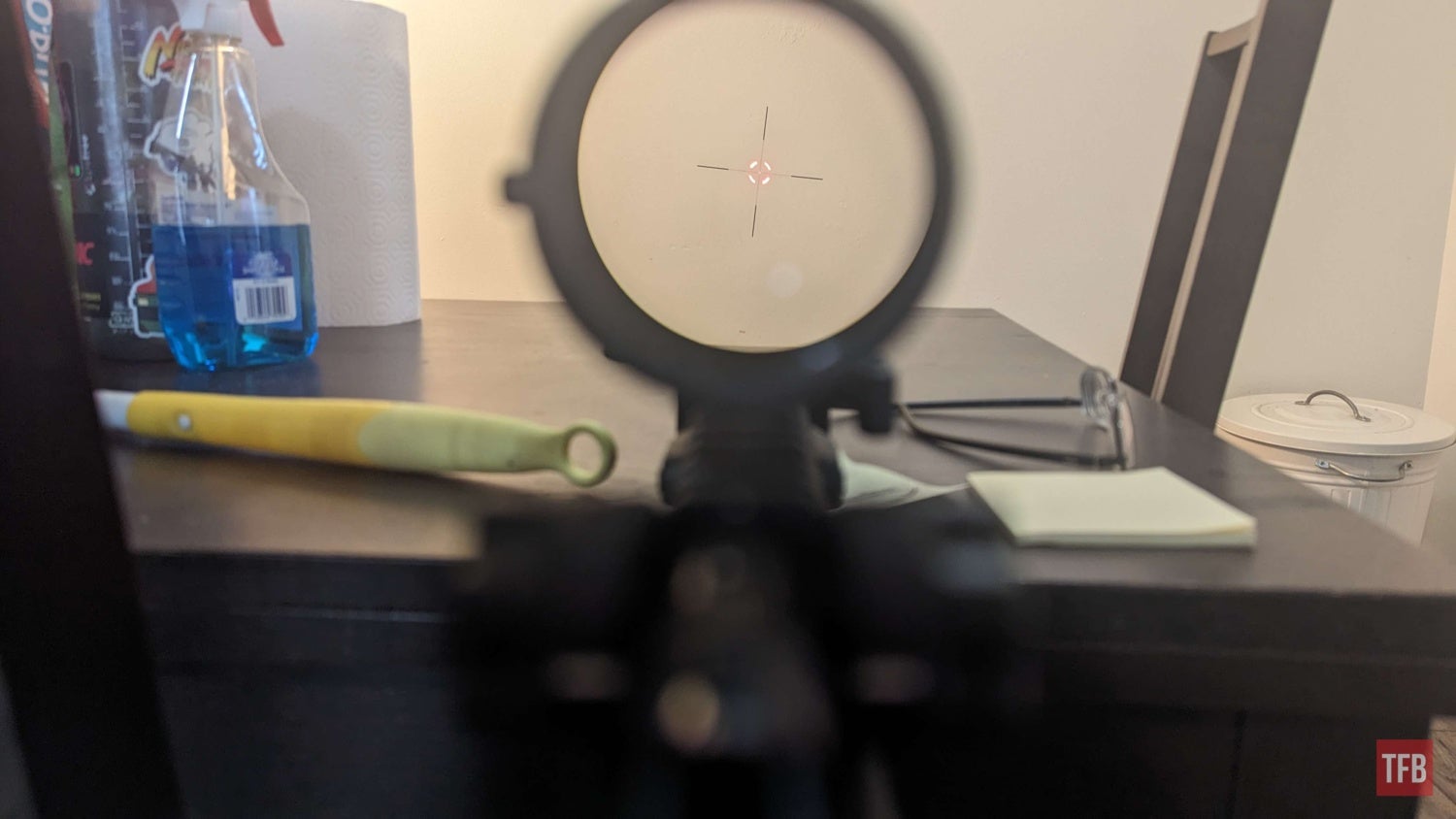
Notice how the illumination is also still working
Closing Thoughts
Thankfully, Trijicon has excellent warranty service and I don’t think there are a lot of people out there running this specific rifle/optic setup. I’m certain that on virtually any other rifle, like the ones it was intended to run on originally (M27 IAR/M4), it would work just fine. I think this little experiment was more out of morbid curiosity to see just which online legend would beat out the other. The SCAR 17 is infamous for destroying virtually any optic unfortunate to get mounted to it, and the VCOG is already well known for being virtually indestructible. While the VCOG didn’t fare so well, I don’t think I want to call the reticle getting shoved sideways a complete fail – the optic is still useful to a degree, but its effectiveness would be significantly reduced.
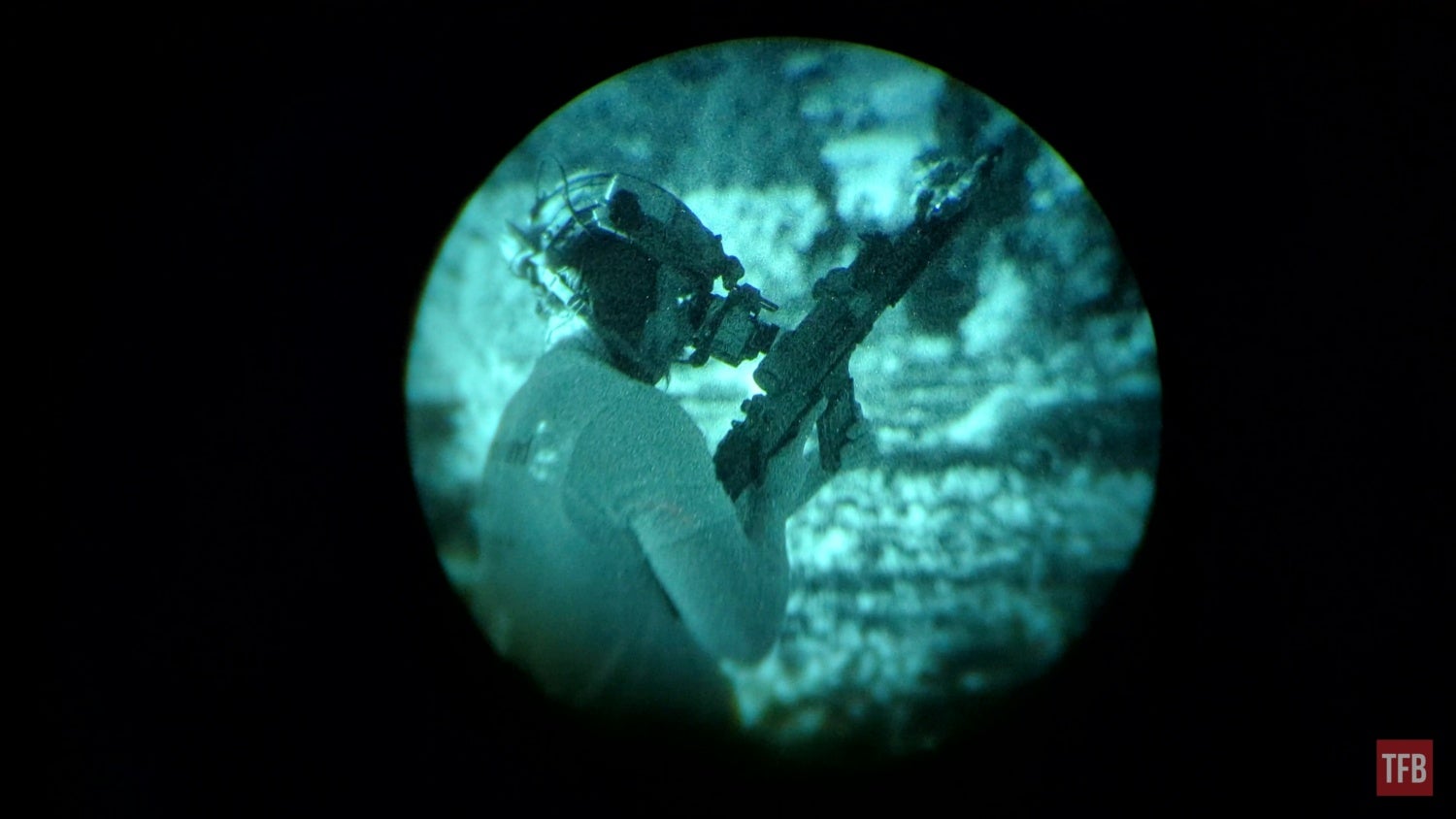
It might be easy to just accuse the VCOG of being a lemon, or just not living up to its claims of durability, however, the optic body itself, its turret caps, the glass, the mount, onboard electronics, and all of the other internal mechanisms of the VOCG are still working great even with the reticle canted to the side. There are more proper ways that people have found to mount optics to SCAR 17’s or otherwise adjust the SCAR 17 to be less violent on the optic, but if we did that, I don’t think it’d be a true test of the baseline performance of either of these two cool products.
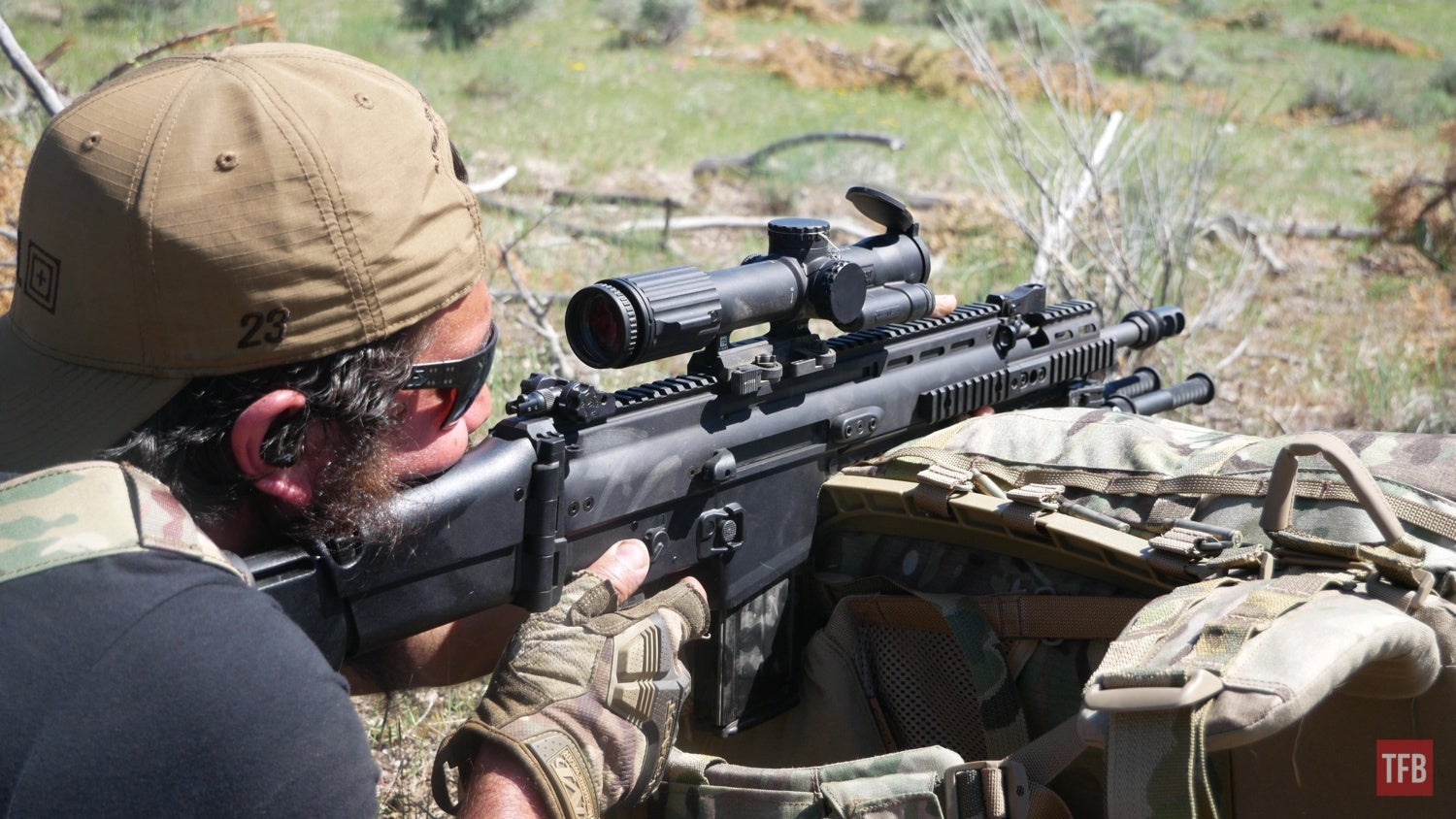
While this test is just a sample size of one, I have to question whether or not the Marine Corps or any other branch of the military that has procured the VCOG has attempted to adapt it for use with the SCAR 17. Typically, the marine corps is seen mounting ELCANs to the rifle which are more or less on par with ACOGs in terms of sheer durability, but the ELCAN offers significantly less in terms of range of magnification, and also useable magnification range. The VCOG is probably the better choice for the Marine Corps – as long as it’s being used on a rifle that won’t break it. For now, I’m just grateful to have been able to not only shoot a lot of rounds through a SCAR 17, but I’m also very grateful I’ve been able to test out one of the optics that has been selected by the Marine Corps to get a taste of what is being used on today’s battlefield.
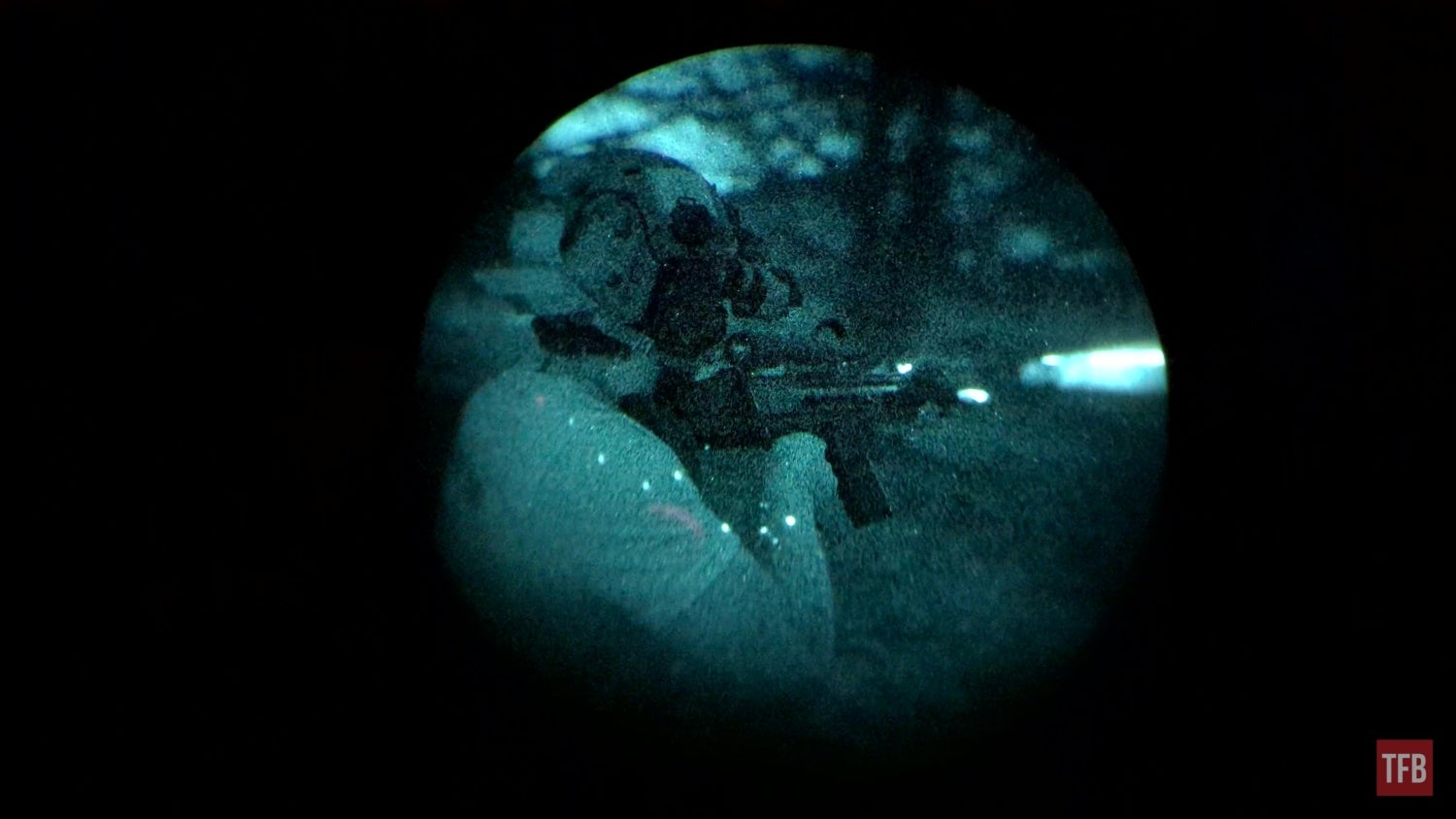
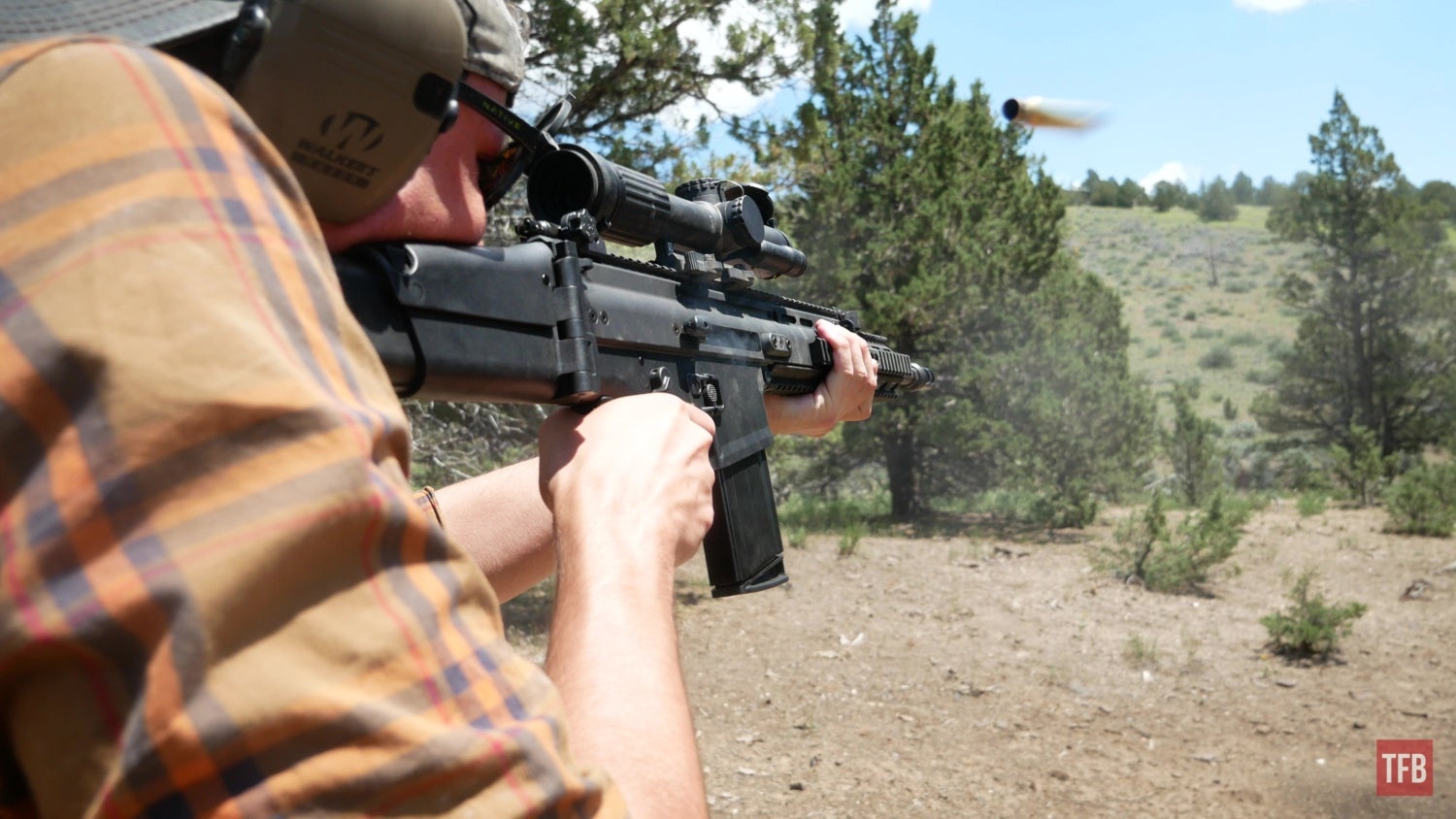
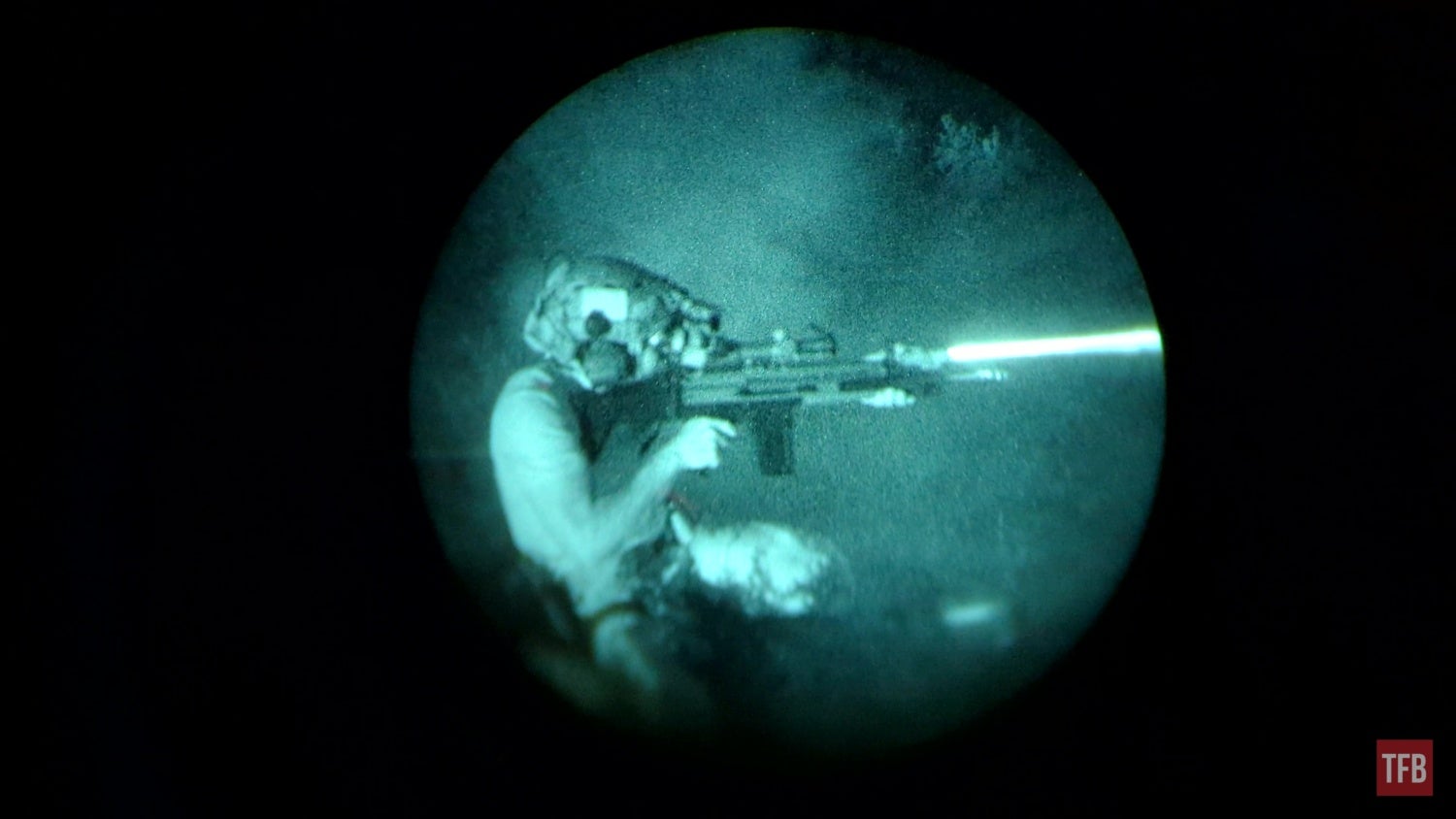
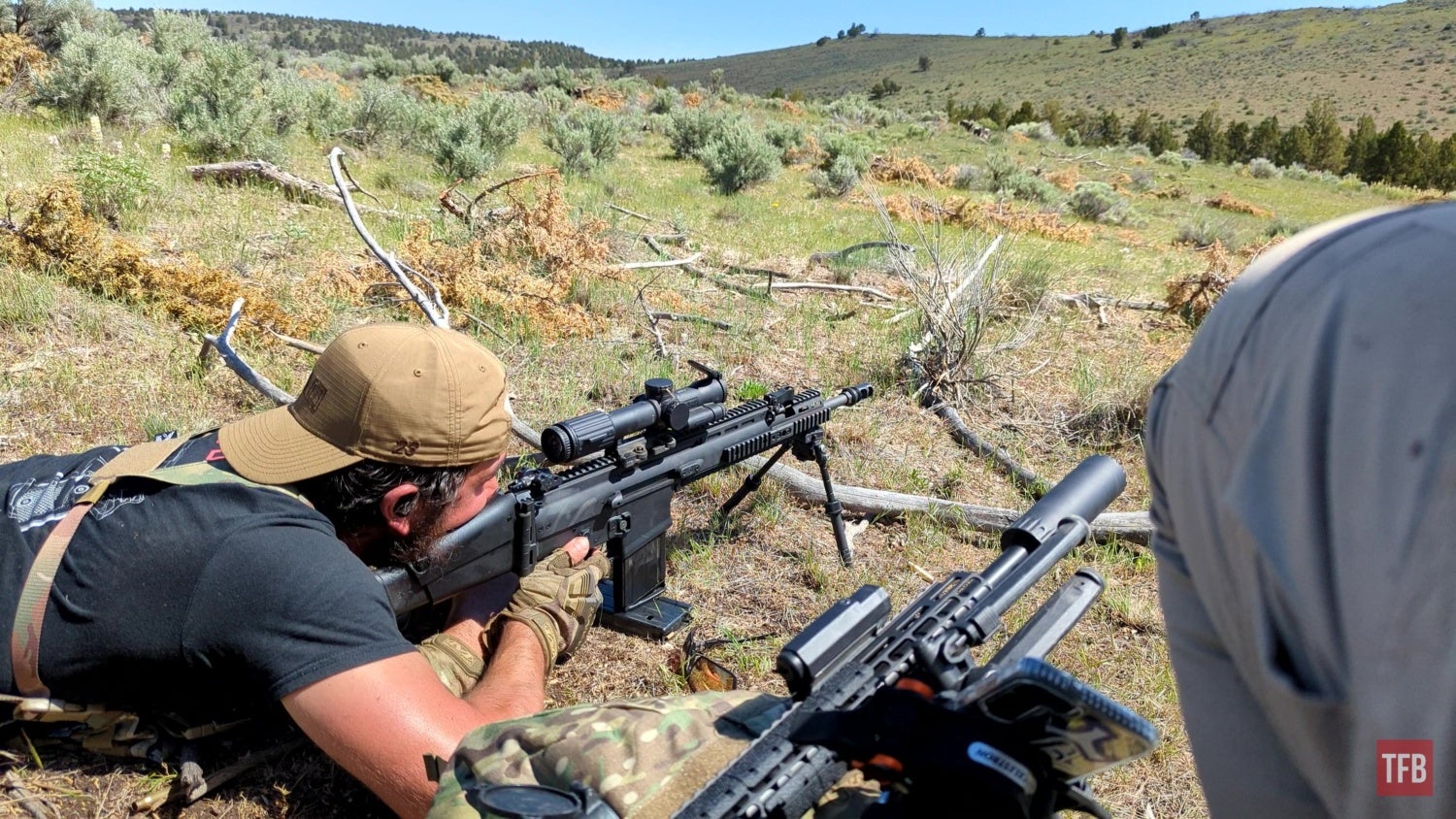
We are committed to finding, researching, and recommending the best products. We earn commissions from purchases you make using the retail links in our product reviews. Learn more about how this works.
 Your Privacy Choices
Your Privacy Choices
